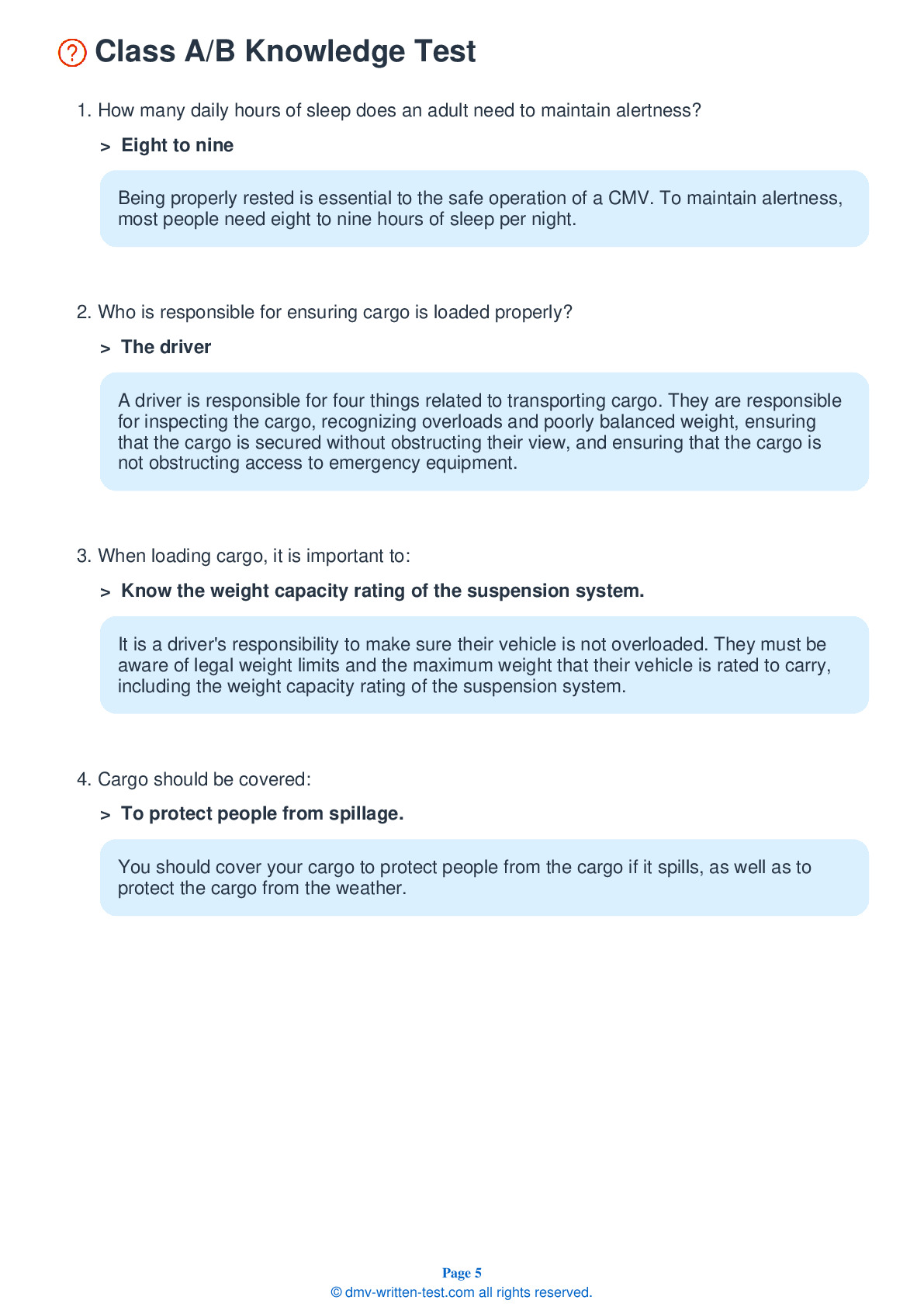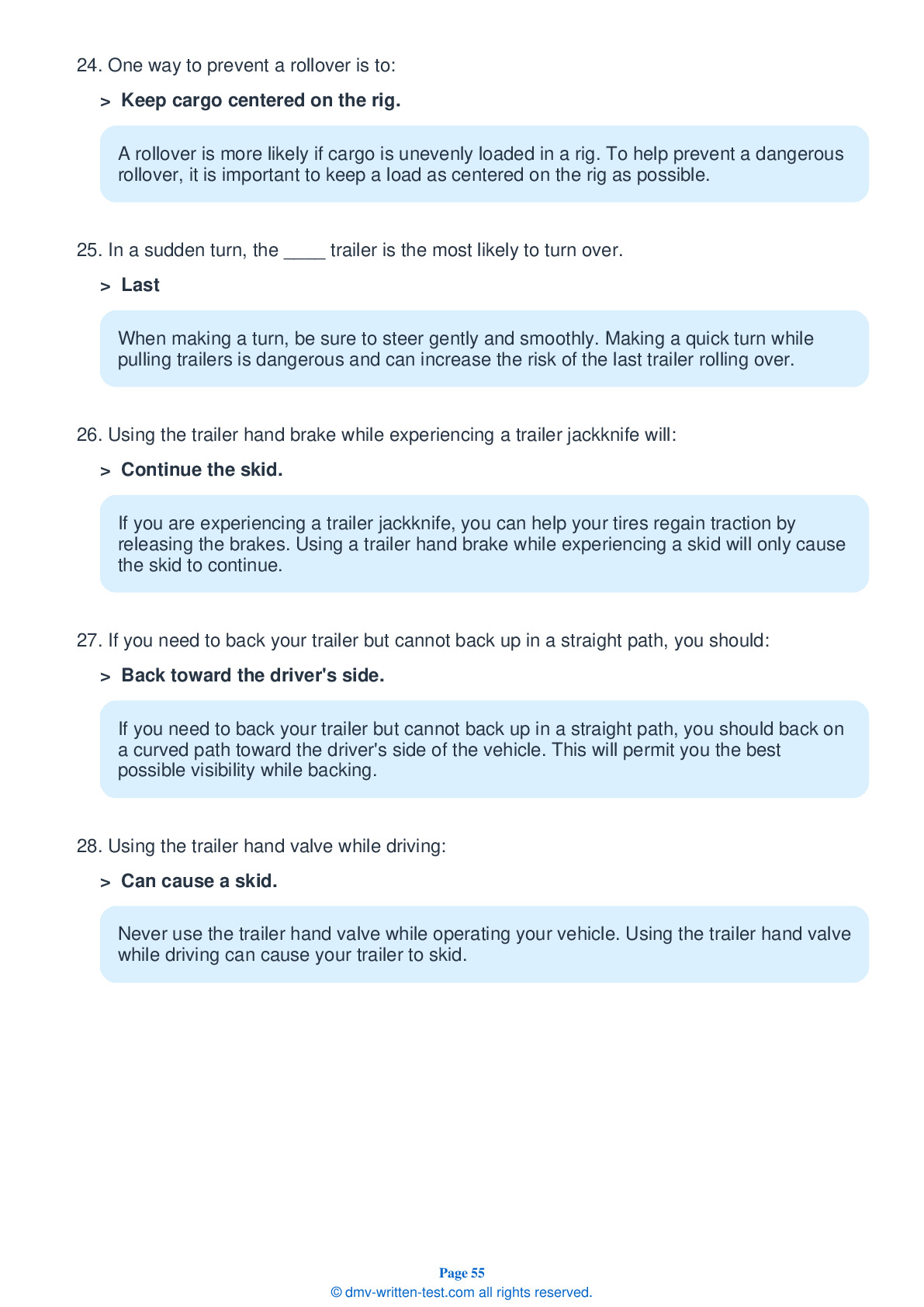Air Brakes
This endorsement is required for driving a vehicle with air brakes. To receive this endorsement, applicants must pass a written test. The test consists of 25 multiple choice questions. Each question has three or four answer choices. To pass, the applicant must answer at least 20 questions correctly. Test questions come from the Connecticut Commercial Driver License Manual. Questions come from the chapter covering: Air Brakes. The Air Brakes endorsement may be used with the Class A, B or C CDL.
Number of Question
Passing Score
1. If you are braking on dry pavement while traveling at 55 mph, how much distance will brake lag add to your overall stopping distance?
Explanation
The total stopping distance for vehicles equipped with air brakes is made up of four factors: perception distance, reaction distance, brake lag distance, and braking distance. When braking at a speed of 55 mph while driving on dry pavement, the brake lag can add around 32 feet to the vehicle's total stopping distance.
2. What happens if brakes become too hot?
Explanation
If brakes are overused, they may overheat and stop working. This is referred to as brake fade.
3. If using spring brakes when hauling a heavy load, a complete stop will:
Explanation
Spring brakes do not work on all axles. If your vehicle's spring brakes activate due to low pressure in an air brake system, your vehicle will need a longer distance to stop than usual, especially if you are carrying a heavy load.
4. An application pressure gauge shows:
Explanation
If a vehicle is equipped, an application pressure gauge shows how much air pressure is being applied to the brakes. This gauge can help a driver identify if their brakes are beginning to fade.
5. The leakage rate for a triple combination vehicle with air brakes should be no more than ____ in one minute during a static leakage test.
Explanation
When performing a static leakage test on a triple combination vehicle with air brakes, the leakage rate should be no more than 5 psi in one minute. If the air leaks from the air brake system at a quicker rate, the vehicle should not be driven because something likely needs to be repaired.
6. Water and compressor oil are usually found in the compressed air within an air brake system. Water and compressor oil:
Explanation




